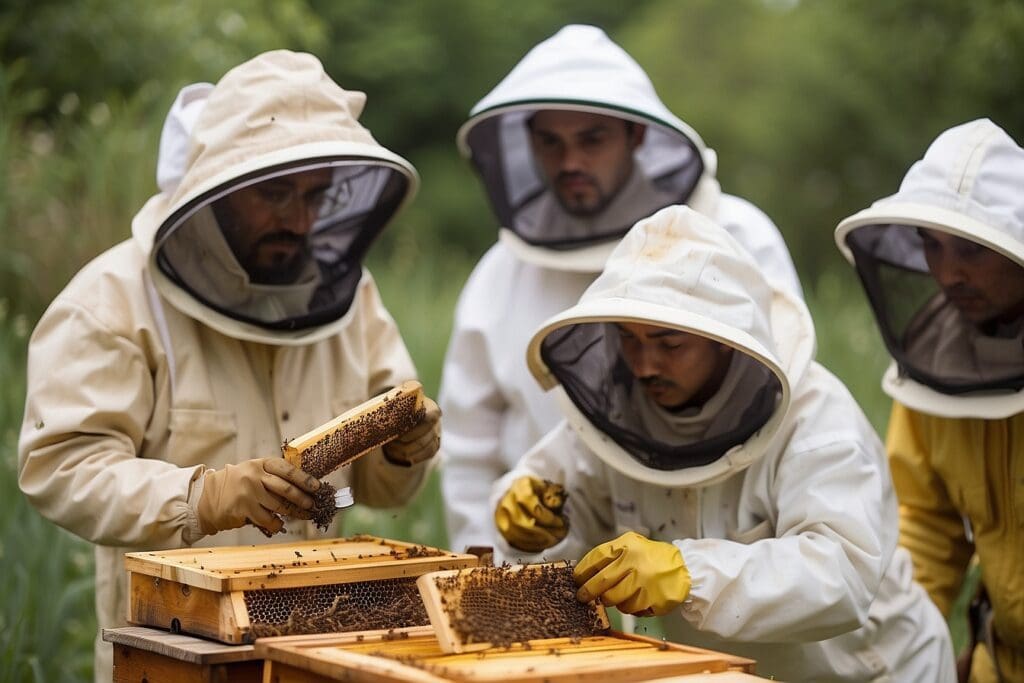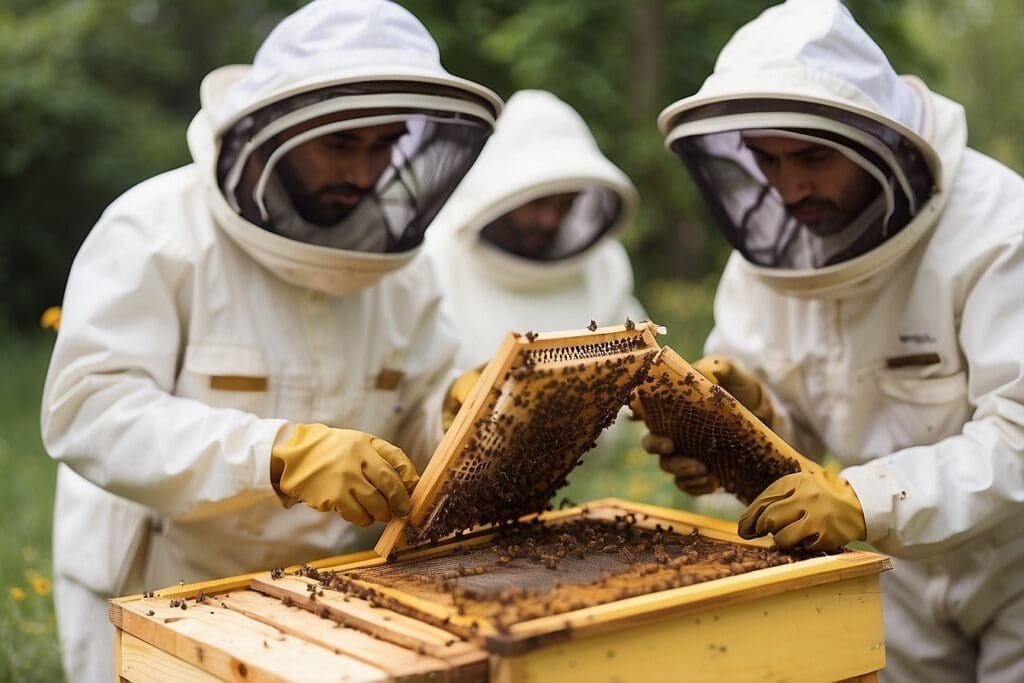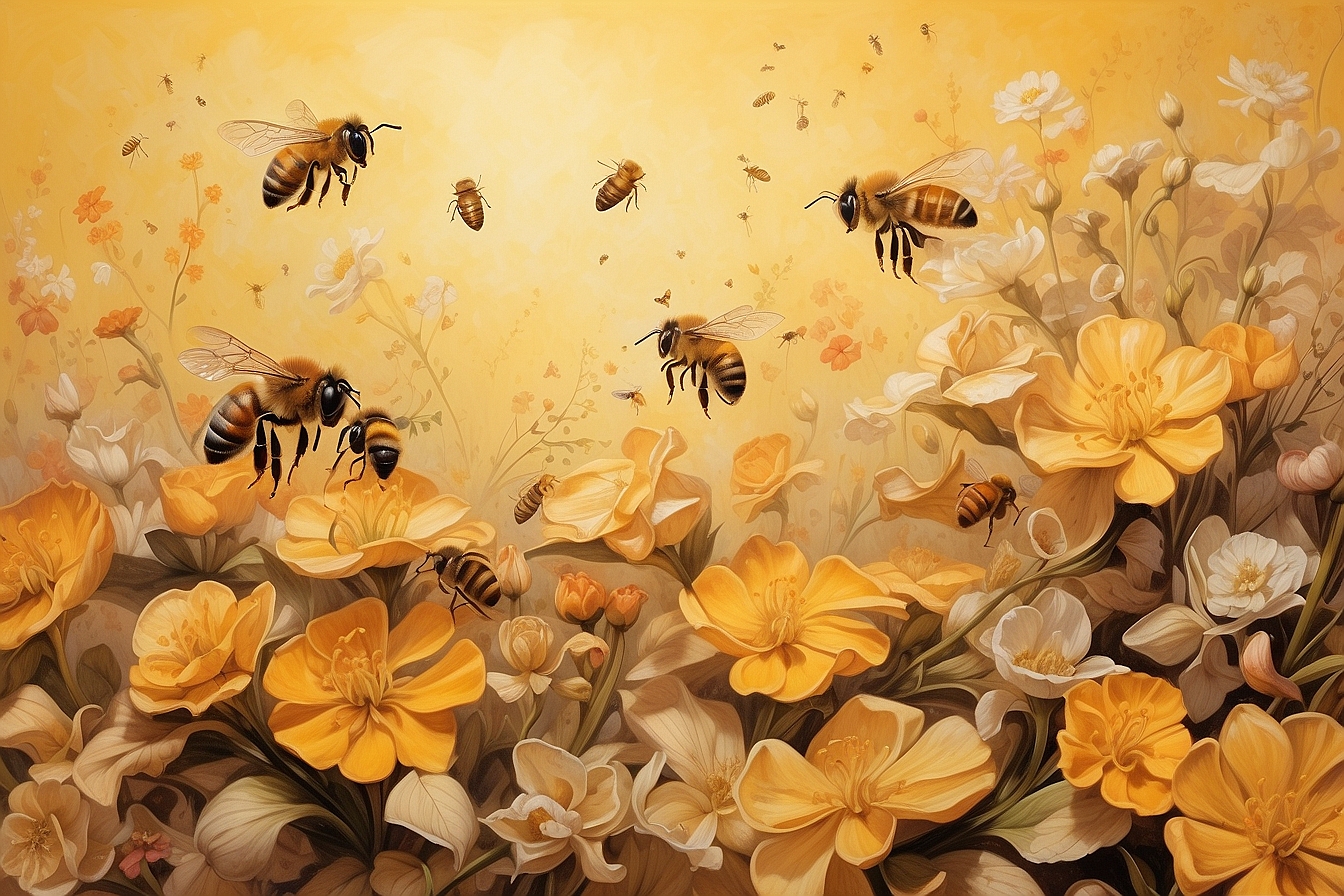Urban beekeeping is on the rise! Urban communities have started a fairly new movement—beekeeping in small plot backyards, on rooftops, in hotels, restaurants, and in small urban gardens. Honeybees are an instrumental part of our global food system and our natural environment. These little creatures are responsible for pollinating over one-third of the crops in the United States, including billions of dollars in agricultural crops each year, pollinating thousands of species of other plants and flowers, and also providing beeswax, pollen, and honey for human use. As honeybee populations have been declining significantly over the past decade (almost 40-50 percent), many different communities across the globe have shown interest in their preservation. For more on the bee decline, check out: Save the Bees.
Urban beekeeping is a win for the farmers, the local community, and the environment. Most urban honey produced has less pesticides and chemicals than commercial honey. It is also believed by some that the pollen found in local honey helps to develop defenses against local allergens. Moreover, as stated in a recent Op-Ed piece in the New York Times, “Local honey will benefit the health of the planet as well: minor transportation costs, no-fuss manufacturing (courtesy of the bees), minimal processing, simple recyclable packaging and centralized retailing provide a model of effective, low-carbon production and distribution.”1
For the consumer, urban beekeeping also has the advantage of offering a delicious, local, and sustainable alternative to your conventional honey. In one San Francisco hive, “[h]arvests vary year to year and colony to colony, but a typical hive of 60,000 bees will produce, on average, between 40 and 60 pounds of honey.”2 That’s a lot of local honey! Aside from the sweet perks of the movement, hosting honeybees in an urban setting can benefit the overall health of the city. Not only can honeybees pollinate enough crops for an entire neighborhood, but they can also contribute to pollinating surrounding gardens and parks.
Beekeeping is thriving in cities from New York to Paris to Tokyo to San Francisco. Since reports of Colony Collapse Disorder flooded the media several years ago, the number and variety of beekeepers in our worlds’ cities have significantly increased. In places like New York where it was recently “re-legalized,” the trend has just begun. On the west coast, The San Francisco Beekeepers Associated estimates that the number of beekeepers in San Francisco grew from 40 keepers almost 10 years ago, to over 400 today.3 Of those 400 beekeepers, a notable example internationally is the Fairmont Hotel & Resort’s commitment to urban beekeeping. The Fairmont Hotel in San Francisco unloaded 4 beehives containing over 80,000 bees onto their rooftop garden this past summer. They hope to help pollinate surrounding green spaces, add honey to their restaurant menus, and eventually bottle and sell the homemade treat. The Fairmont Hotels & Resorts commitment to beekeeping does not end in San Francisco, however:

- The Fairmont Waterfront in Vancouver shares its 2,100-square-foot herb garden with six honeybee hives on the hotel’s third-floor terrace. The hotel’s inaugural honeybee season in 2008 produced a harvest from two hives, while in 2009 the hotel hatched their own queen bee for a third hive and captured a fourth hive of wild bees that outgrew their original home in nearby Stanley Park. Summer 2010 brings two additional hives, bringing the apiary to just over 390,000 honeybees producing an anticipated 500 lbs of honey. Guests of the hotel are invited to join the weekly garden and hive tours conducted by Director of Housekeeping and resident Beekeeper, Graeme Evans.
- The Fairmont Royal York in Toronto expanded its own rooftop apiary from three to six hives in summer 2009, which is now home to around 300,000 bees in peak season. Later in the year, the hotel’s honey placed third in the Dark Honey category at the 2009 Royal Agricultural Winter Fair, following up their second place finish in 2008. Since June 2008, nearly 800 pounds of honey have been harvested from the 14th story apiary, with much of it going into the hotel’s mouthwatering cocktails and cuisine.oneybees producing an anticipated 500 lbs of honey. Guests of the hotel are invited to join the weekly garden and hive tours conducted by Director of Housekeeping and resident Beekeeper, Graeme Evans.
- The Fairmont Washington, D.C. has guests buzzing after welcoming 105,000 Italian honeybees in summer 2009 to their three new hives on the roof, affectionately named Casa Bella, Casa Blanca and Casa Bianca. The bees enhance the hotel’s culinary program along with its interior courtyard garden, which already provides fresh herbs and flowers such as edible pansies, as well as plants, trees and flowers.
At a time when our world is in heavy competition for food sources, the health of our environment is of global concern, and local or sustainable food is in demand, the urban beekeeping movement falls appropriately into place within our crowded cities.
To learn more about the decline of honeybees or how to join the movement, check out these resources:





